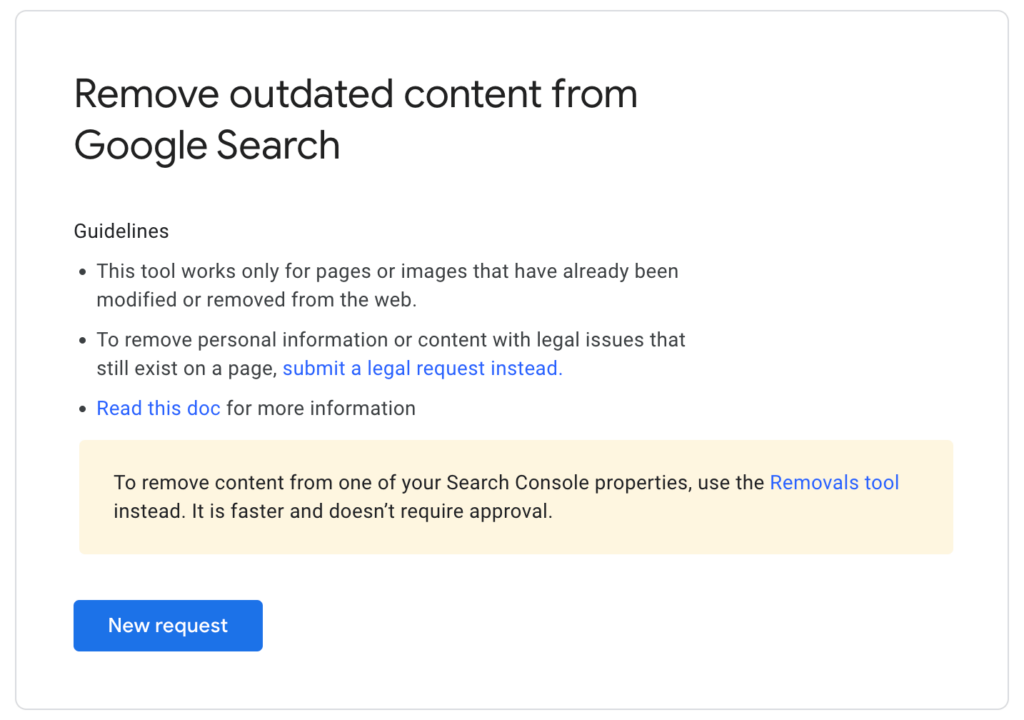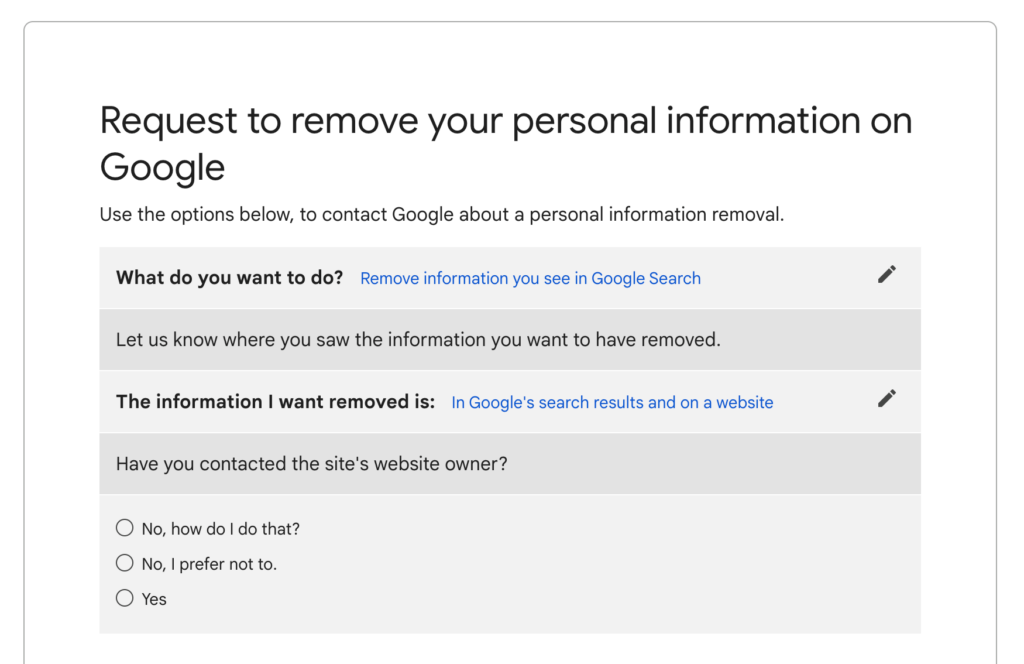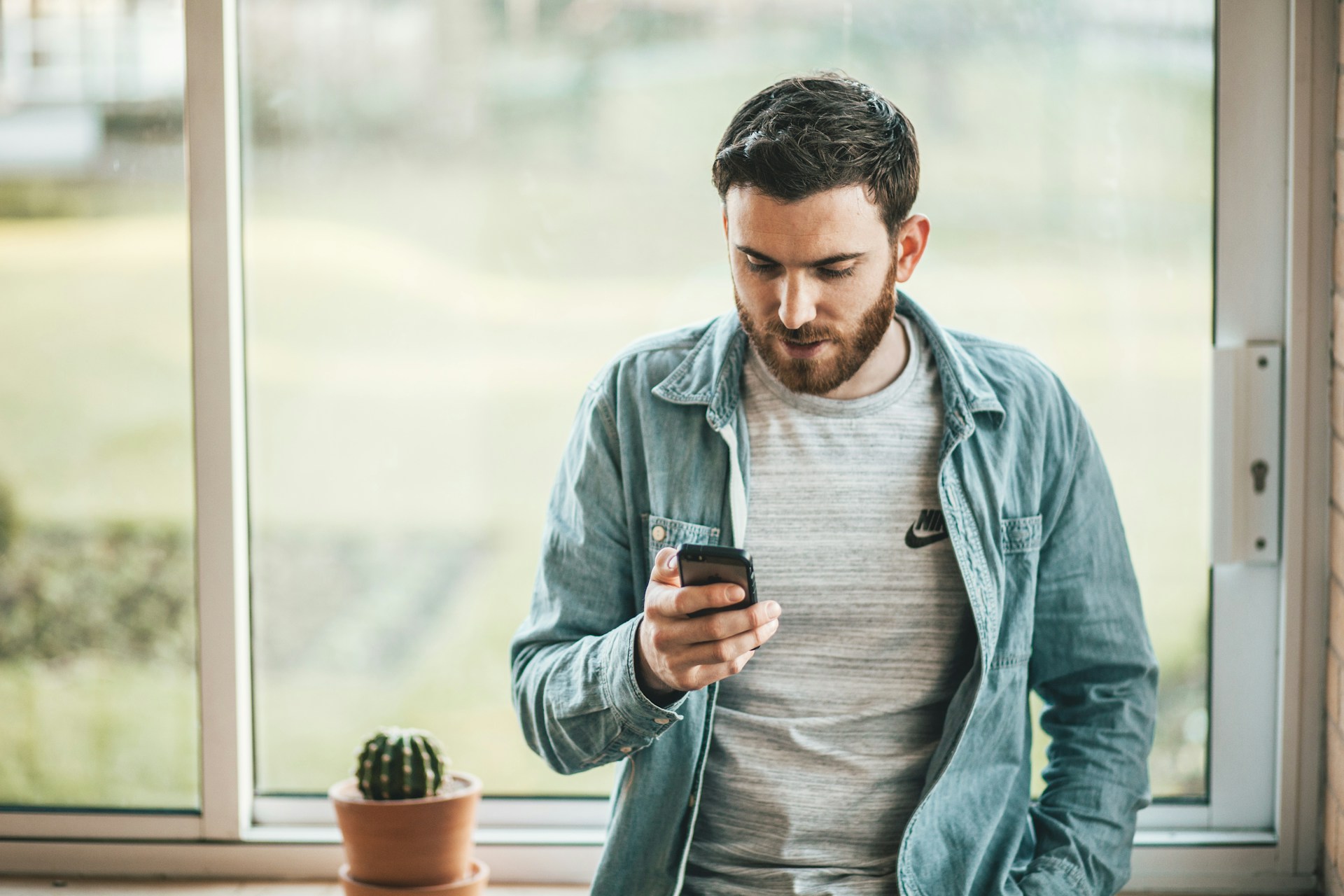How to Remove Sensitive Personal Information from the Internet
Will Simonds
Reading time: 7 minutes

Table of Contents
The thought alone is horrifying: uncovering sensitive personal information, exploitative pictures, or other negative content about yourself online. In reality, published sensitive content can hurt your reputation, impact your job, cause incredible stress, and even pose a huge security risk.
Now, removing content from the web isn’t the easiest thing to do, but the good news is that there are steps you can take to salvage your reputation and protect your digital privacy.
Read on to find out how to remove sensitive information about yourself from the Internet.
What kind of sensitive information can appear in a Google search?
Many types of information on the web can be harmful. Some of this content might just be a hit to your ego, or damage your reputation, but some can cause a severe security threat.
Here are some examples of sensitive personal content that might be found online:
News articles, comments, or reviews
A negative news article can be devastating to job opportunities, business possibilities, and other professional relationships. Along with negative comments or reviews on any high-authority website, these might damage your reputation, but in most cases don’t pose a risk.
Doxxed information
Doxxing (or doxing) is the act of publicly revealing one’s identity or personal information without their permission. It’s a tactic most commonly used to harass, punish, or intimidate.
Doxxed information can be anything from sensitive emails to the exposure of sensitive personal information. Doxxed information almost always causes a severe security threat.
Intellectual property (DMCA)
Intellectual property refers to creations—such as inventions, artworks, names, or images—used in commerce and protected by The Digital Millennium Copyright Act (DMCA).
If another individual takes credit for your creative accomplishments online, it can be harmful to you or your business, but usually doesn’t create a security threat.
Personally identifiable information (PII)
At first glance, personal information might not seem as “sensitive” as other types of content mentioned here. But, in fact, personal information published online without consent can be far more dangerous than a mere negative news article or review.
Having your personally identifiable information (PII) exposed online is a massive security threat. It can lead to phone scams, bullying, stalking, even identity theft. Here are some examples:
- Full name
- Home address
- Email address
- Social security number (SSN)
- Passport number
- Driver’s license number
- Credit card numbers
- Date of birth
- Phone number
- Property deeds, such as vehicle identification number (VIN)
- Login details
Exploitative content
Exploitative content—like non-consensual nude pictures or videos—published online can be incredibly painful, and can cause a lot of stress and anxiety.
As well, faked images (known as “deep fakes”), in which an individual in an existing image or video is replaced with someone else, can have a big impact on one’s reputation.
Exploitative content is always a security threat and, in these situations, seeking out professional legal advice is highly recommended.
How do I remove sensitive content from a Google search?
The fight to remove harmful content from the Internet is a race against time. The longer it’s up and available, the further it can spread and the more damage it can do.
Therefore, going through all five of the below steps as soon and as quickly as possible is your best chance to get sensitive content off the Internet.
1. Contact the website or publication directly
The best place to start when trying to remove content is the website or publisher where it was originally found. Ask them to take the content down, or to add a no-index tag to it.
To find out ownership of a particular website or publication, look for contact details provided on the site, or use the Whois.com tool if that doesn’t work.
If you’re lucky, this might be the only step you need to take. However, webmasters don’t usually respond to content removal requests. Unless the content they’ve published of you is against the law, they have no obligation to remove it.
2. Manage your reputation using a data-removal service
Unless you have prior experience removing content from the web, it’s best to work with experts. Sign up with an information and privacy management company like DeleteMe, and you can rest assured everything possible will be done to remove the sensitive content.
At DeleteMe, we take care of your online privacy not only by getting rid of content that you request to be removed, but also by making sure your personal information doesn’t end up for sale online to marketers or fraudsters.
Our team consists of digital privacy experts specialized in removing information from the Internet. Any time you find personal info listed online, our advisors will investigate to determine if we can remove it for you. We can also provide you guidelines to remove it yourself.
3. Remove outdated search results from Google
In case the content published about you was removed from the Internet but is still appearing in search results, simply use the “Remove Outdated Content Tool” from Google. It allows you to request an update to servers. It’s quite simple:
- Start by clicking “New request.”

- Enter the URL that needs to be updated and the information required.

- Submit your request.
4. Send a removal request to Google
If contacting the webmaster is unsuccessful, and you don’t want to work with experts, the next best option is to ask Google for help directly.
According to Google’s updated search removal policy, they’re committed to the removal of content in the following circumstances:
- It contains sensitive personal information (email, physical address, phone number, or images of identification documents)
- It includes confidential login credentials
- It violates intellectual property rights, such as trademark or copyright
- It includes content that doesn’t comply with a court order
- It is considered exploitative
To request the content removal you just need to answer a few questions and provide necessary evidence by filling out Google’s Content Removal Request.

5. Suppress the sensitive content
If the previous steps don’t work, a last resort is to try to bury potentially negative search results.
This means, instead of trying to remove harmful content, you try to create new content that ranks higher in Google search results.
To do this, you need to understand how search engines work:
Google top search results are the ones calculated most relevant to the user. To determine that, search algorithms look at many factors, including keywords, authority and page usability, quality of content, source expertise, and user location and settings.
The page that hits the most of these factors will be ranked the highest.
Depending on how sensitive content published about you appears in a search result—from your name or a business name, for instance—the content can be buried by doing the following:
- Create new public social media profiles on well-known platforms (individual or business)
- Create a Wikipedia page (individual or business)
- Garner positive media mentions from high-authority websites and publications (individual or business)
DeleteMe and removing personal information from the Internet
Have a better idea about how to remove sensitive personal information from the Internet?
Well, even if you manage to clear your name from Google search results, it doesn’t mean that you can just forget about the whole thing and continue life as usual.
Unless you take preventative measures, it’s likely that sooner or later you will encounter another similar problem, with either the same content, or something new, appearing online.
The only way to assure your personal information stays safe is to attack the problem at the root, and make sure your personal information doesn’t end up available online in the first place.
You can do this by learning more ways to protect your online privacy with free resources from DeleteMe, or by signing up for our service.
Our privacy advisors:
- Continuously find and remove your sensitive data online
- Stop companies from selling your data – all year long
- Have removed 35M+ records
of personal data from the web
Save 10% on any individual and
family privacy plan
with code: BLOG10
news?
Don’t have the time?
DeleteMe is our premium privacy service that removes you from more than 750 data brokers like Whitepages, Spokeo, BeenVerified, plus many more.
Save 10% on DeleteMe when you use the code BLOG10.















